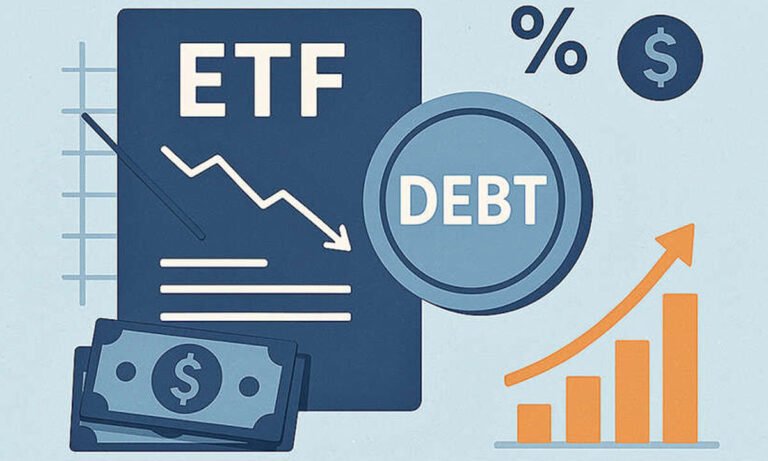Like the equity, debt markets also are influenced by interest rate changes, inflationary expectations, government policies, geopolitical theatre
A debt ETF is a passively managed fund that invests in similar instruments per the fund objective. This is, however, tradable on an exchange like an equity stock or ETF. It’s not intervened by any human or fund manager to pick its constituents but mimics a pre-defined bond index which is in accordance with the fund objective
Theinvestment industry is going all passives particularly with equity due to the cost consideration. Now, the same has been extrapolated to debt options through Debt ETFs (Exchage Traded Funds). While many investors know about ETFs particularly the equity ones, not many are aware of their debt counterparts. Of course, just because it’s an ETF doesn’t have to be better or cheaper. So, let’s dwell a bit more in understanding these offerings and their suitability.
A debt investment usually deals with bonds, fixed-income, credit issuance, etc., for the bond issuers (borrowers) and bond holders (lenders). The parties involved are govt., corporations, financial institutions, etc., each acting as both borrowers and lenders at times and per requirement. And like the equity, debt markets also are influenced by interest rate changes, inflationary expectations, government policies, geopolitical theatre.
A debt ETF is a passively managed fund that invests in similar instruments per the fund objective. This is, however, tradable on an exchange like an equity stock or ETF. It’s not intervened by any human or fund manager to pick its constituents, but mimics a pre-defined bond index which is in accordance with the fund objective. It thus, could be offered at lower costs, while retaining a higher transparency (over the discretion of the constituents). Largely the debt ETFs are based on four broader classifications, depending on their offerings.
Liquid/Overnight ETFs: These’re typically for the short to very short periods of time. The typical investment avenues are t-bills (treasury bills which have a maturity of less than a year – 364 days), overnight money or call money. The risk is low and so is the return, but it helps institutional investors and even some retail investor to act as parking funds i.e., keep their idle money in a productive way for short periods. The overall size of debt market when compared with equities is considerably lower in India, though it’s fast catching up. The combined assets under management (AUM) of debt ETFs now stands over 1Lakh crore. This is about double in the last three years and mostly it was powered by institutional investors like that of Employee’s Provident Fund Organization (EPFO), insurance companies, etc.
The short to very short are addressed through overnight funds, liquid funds and ultra short-term funds. Then there’re short term funds, corporate bond funds and gilts for an increased tenor of the investment. These are actively managed funds by professionals who allocate depending on the fund objective to achieve the desired results. Investors could buy, switch or sell these funds but they’re not listed on the exchanges.
Gilt ETFs: The investments are predominantly paper or bonds issued by the govt. A mix of government bonds of various duration is involved. These are highly sensitive to the interest rate risk, policy decisions and political changes. So, only investors with higher risk appetite could consider them. Though they offer highest security (in term of capital protection), often are rocked by volatility in the short term.
Corporate Bond ETFs: The index these are invested are bonds that are issued by various corporate bodies. Typically consist of investment-grade ratingthey offer better liquidity, returns and safety. They’re also impacted like any bonds by the interest rate fluctuations but could offer better returns.
Target Maturity Debt ETFs: These invest in indices that mirror a defined period of maturity. The constituents are generally PSU/govt. bonds with a specified maturity year. The risk profile is low if held till maturity and address defined cashflow requirements in the future. Usually employed by insurance companies, trusts, etc. where they seek for a cash inflow in a specific year.
To distinguish the available options and match their usage requires a higher level of understanding and time. Also, for a conservative investor, it’s difficult to remain invested in volatile times as the index moves violently. Most importantly, the investor should be clear and precise in their requirements for options like target maturity funds (TMF). Though, they seem like an easier option, the capacity to handle them requires a bit of sophistication and thus not an ideal switch for those looking for convenience and flexibility.
(The author is a partner at “Wealocity Analytics”, a SEBI registered Research Analyst firm and could be reached at [email protected])

